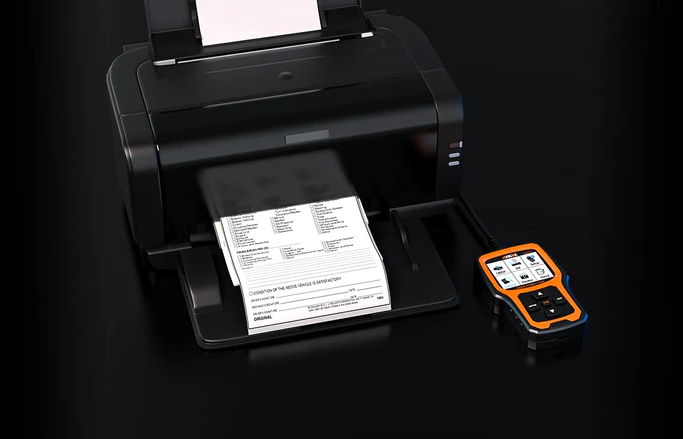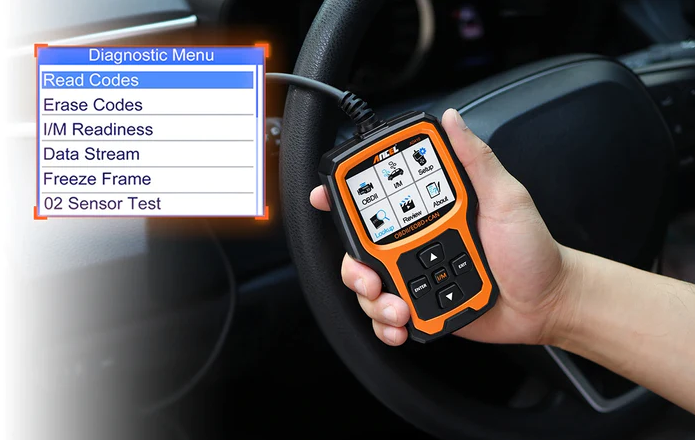In the rapidly evolving world of automotive technology, understanding the intricacies of vehicle diagnostics is crucial. As we delve into this expansive topic, we aim to provide an in-depth analysis of modern diagnostic techniques, their importance in maintaining vehicle health, and how they can save your time and money in ensuring your safety.
Understanding Vehicle Diagnostics: A Key to Automotive Health
Vehicle diagnostics are an essential aspect of automotive care. This process involves using advanced diagnostic tools to read and interpret the data generated by your vehicle’s onboard computer. These tools, ranging from basic code readers to more sophisticated diagnostic software, are pivotal in identifying issues in your vehicle’s engine, transmission, exhaust system, brakes, and other major components.
ANCEL‘s collection(https://www.ancel.com/collections/universal-car-diagnostic-tool) of universal car diagnostic tools offers a wide range of professional OBD2 scanners, catering to various needs and preferences for vehicle diagnostics. These tools are designed to provide comprehensive vehicle analysis, suitable for both professional mechanics and automotive enthusiasts. The range includes diverse models like the ANCEL FX2000, which focuses on ABS, SRS, airbag, and transmission engine diagnostics, and the ANCEL BD500, a Bluetooth 5.0 OBD2 scanner compatible with VW, Audi, Seat, and Skoda models. Other notable products include the ANCEL AD530, a versatile OBDII code reader supporting all OBD 10 models, and the ANCEL AD410, a professional diagnostic scanner.
The collection also features specialized tools like the ANCEL FX8000, an all-in-one diagnostic tool for all brands, and the ANCEL AD410 PRO, which combines OBD2 car code reading with a 6V-12V auto battery load tester. For BMW and Mini Cooper owners, the ANCEL BD300 offers a Bluetooth scan tool with comprehensive diagnostic capabilities, including SRS airbag, ABS, engine, TPMS fault codes, battery registration, and oil reset. The ANCEL AD310 and AD610 Plus are other notable options, providing engine code reading and bidirectional diagnostic reset tools for ABS, SRS airbags, and more. Each product in this lineup is designed to meet the diagnostic needs of a wide range of vehicles, ensuring reliability and ease of use for various automotive applications.

The ANCEL AD410 PRO is an advanced OBD2 car code reader and scanner, equipped with a 6V-12V auto battery load tester, making it a versatile tool for automotive diagnostics. This device is designed to provide a comprehensive analysis of a vehicle’s engine and battery health, featuring a unique one-click I/M readiness function for quick and efficient scanning. It supports full OBDII diagnostic functions, including reading and erasing fault codes, live data stream viewing, freeze frame data, O2 sensor and EVAP system tests, as well as retrieving essential vehicle information like VIN, CIN, and CVN. The scanner’s user-friendly interface is enhanced by a 2.8-inch TFT colour screen and a 2.5-foot-long cable, ensuring ease of use in various automotive settings.
In addition to engine diagnostics, the ANCEL AD410 PRO excels in battery testing, offering functionalities like battery, cranking, and charging tests. These features allow for real-time battery voltage analysis, displayed graphically to assess the battery’s condition accurately. The device is compatible with a wide range of vehicles, supporting most OBD2 protocols and catering to a diverse array of American, European, and Asian cars. It also boasts multilingual support, including languages such as English, French, Spanish, and German, among others. With its capability for lifetime software updates and a robust design, the ANCEL AD410 PRO is an invaluable tool for both professional mechanics and automotive enthusiasts, offering a reliable and comprehensive solution for vehicle diagnostics and maintenance.
The Role of Onboard Diagnostic Systems (OBD)
Modern vehicles are equipped with Onboard Diagnostic systems (OBD), a pivotal innovation in vehicle diagnostics. OBD systems monitor the performance of various components and systems within the vehicle. When a problem is detected, the OBD system generates a specific fault code, commonly known as a Diagnostic Trouble Code (DTC), which can be read using a diagnostic scan tool.
Benefits of Regular Vehicle Diagnostics
Early Problem Detection: Regular diagnostics can detect problems before they escalate into costly repairs.
Improved Performance: Diagnostics ensure that your vehicle is running at its optimum efficiency.
Fuel Efficiency: Identifying and fixing issues can lead to improved fuel economy.
Environmental Benefits: Proper diagnostics can reduce emissions by ensuring the vehicle’s emission control system is functioning correctly.
How to Perform Vehicle Diagnostics
Performing vehicle diagnostics requires a diagnostic tool that is compatible with your vehicle’s OBD system. The process typically involves the following steps:
Connect the diagnostic tool to the OBD port, usually located under the dashboard.
Turn on the ignition to power the tool.
Follow the tool’s instructions to read the fault codes.
Interpreting Diagnostic Codes
Understanding the meaning of diagnostic codes is vital. These codes are typically alphanumeric and can indicate a wide range of issues. For instance, a code beginning with ‘P’ usually refers to a powertrain issue, while ‘B’ indicates a body-related problem.
Advanced Diagnostic Techniques
Beyond basic code reading, advanced diagnostics involve detailed analysis of the vehicle’s data. This can include real-time
monitoring of engine performance, analyzing the vehicle’s electrical system, and conducting comprehensive system tests. These advanced techniques provide a deeper insight into the health of your vehicle.
Common Issues Uncovered by Vehicle Diagnostics
Vehicle diagnostics can uncover a range of issues such as faulty oxygen sensors, misfiring engines, malfunctioning emission systems, and electronic control unit (ECU) problems. Early detection of these issues can prevent more serious problems and expensive repairs in the future.
Choosing the Right Diagnostic Tools
Selecting the right diagnostic tools is crucial. Options range from basic code readers to professional-grade scanners. While basic tools are great for simple troubleshooting, more sophisticated scanners provide extensive data and analysis capabilities.
DIY Diagnostics vs. Professional Assistance
While DIY diagnostics can be cost-effective for basic issues, professional assistance is recommended for more complex problems. Automotive technicians have specialized tools and expertise to interpret diagnostic data accurately and perform necessary repairs.
The Future of Vehicle Diagnostics: Smart Technology Integration
The future of vehicle diagnostics is shaping up with the integration of smart technology. Telematics systems, which combine telecommunications and informatics, are increasingly being used in vehicles. These systems provide real-time diagnostics, monitor vehicle performance, and even predict potential issues before they become serious.
Regular Diagnostics: An Essential Part of Vehicle Maintenance
Regular vehicle diagnostics should be an integral part of your vehicle maintenance routine. It not only ensures the longevity and performance of your vehicle but also contributes to road safety.
Conclusion
In conclusion, vehicle diagnostics is a dynamic and essential field in automotive technology. By understanding and utilizing these diagnostic techniques, you can ensure the health and efficiency of your vehicle, saving time and money while enhancing safety on the road.
